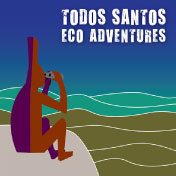by Bryan Jauregui, Todos Santos Eco Adventures. This article was originally published in Janice Kinne’s Journal del Pacifico
It was the days of the Mexican revolution and Juan Cuevas had had enough. La Paz had grown too big and too political for his tastes so he set out to find someplace with no government and no people. A Sea of Cortez fisherman by trade, Juan tried living on the beautiful and unpopulated islands of San Jose and San Francisco; these experiences prompted him to add no mosquitos and no noseeums to his list of requirements. After years of defining his search by what he didn’t want, in 1923 he finally found what he did: El Pardito, a 2.5 acre rock in the Sea of Cortez, 45 miles north of La Paz. There were no structures, no gardens, no electricity, no people, no government, no mosquitos. It was just a rock, and Juan was thrilled. He brought his wife Paula out to El Pardito and in short order they built a wooden house, brought in chickens and pigs and produced 9 children. From that day to this, a Juan Cuevas has lived, worked and loved on El Pardito.
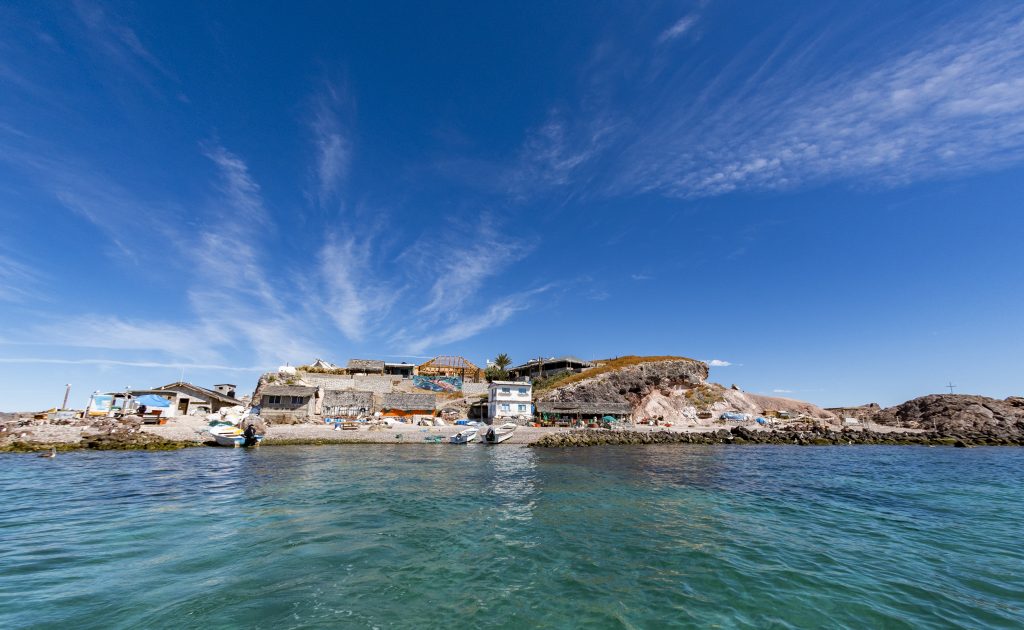
When Juan found his dream location it was still almost two decades before Jacques Cousteau would declare the Sea of Cortez the Aquarium of World due to its great abundance of marine life. A fisherman living on a rock in the midst of such bounty smacked of genius, and Jacques Cousteau himself once paid Juan a visit on his rock. “Most fishing communities in the days of the original Juan focused on shark fishing as shark livers were the main source of Vitamin B around the world until other sources emerged during World War II. Demand was huge and the original Juan was a big part of this trade” notes Amy Hudson Weaver, a marine biologist with the conservation group Niparajá who lived on El Pardito for 8 months in 1995-1996 and continues to work closely with the family. “Juan was so successful that he was able to build a large house for the family on the Malecon in La Paz so they would have a place to stay during their periodic trips to the city.”
Wealth was not all that the Cuevas family accumulated. Notes Amy, “To successfully hunt sharks you have to know a tremendous amount about them. For example, you have to know when they are pupping so you don’t accidentally interfere with reproduction. That knowledge was handed down among the generations in the Cuevas family, and many shark biologists spend time at El Pardito because the family’s knowledge of sharks is so deep.”
Sharks are just one of myriad species for which the Cuevas family has profound knowledge. Don Croll, the former director of the School for Field Studies and current professor at the University of California at Santa Cruz, has been going to El Pardito for 30 years, and has known the current Juan Cuevas, the 40-year old great great grandson of the original since he was 10 years old. “Juan and his brother Felipe didn’t have much formal education on El Pardito, but their knowledge is astounding. Lots of people can identify a turtle or fish species when they’re holding it in their hands, but Juan and Felipe can identify a species from the boat from really far away, and I rely on them for this. Their marine life capture skills are equally remarkable. When the Monterrey Bay Aquarium needed someone to help them live capture manta rays for their Sea of Cortez display, I didn’t hesitate to recommend Juan and Felipe.”
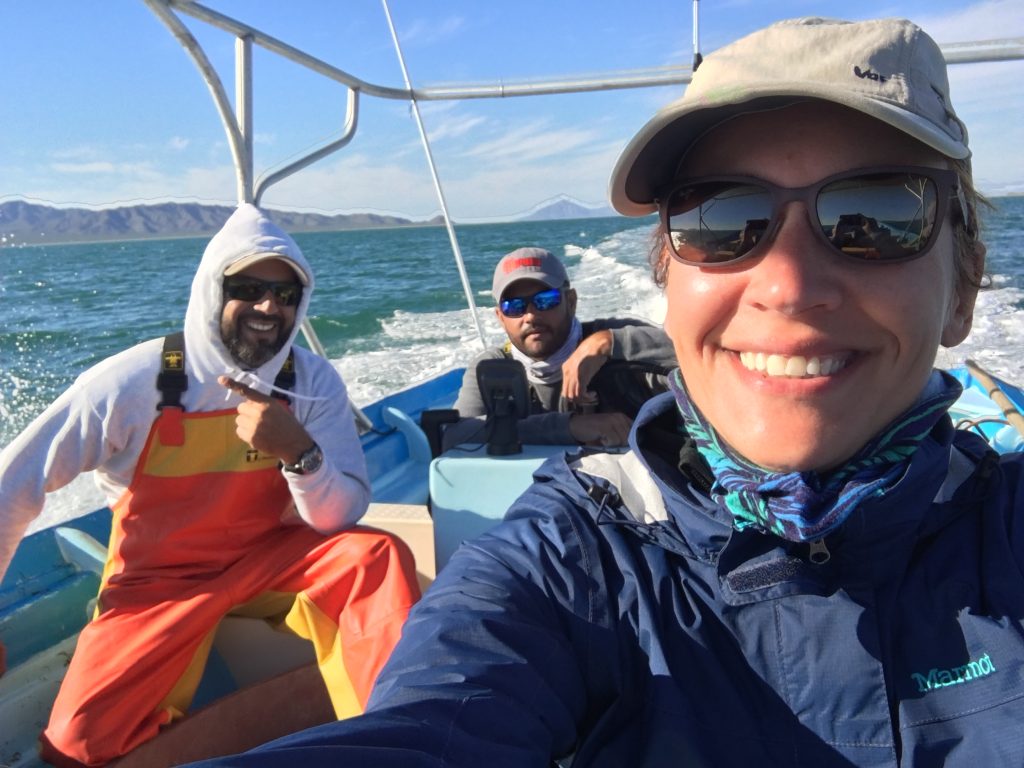
By the time Don’s doctoral student, Luli Martinez, started field work for her Ph.D. on El Pardito in 2014, the great abundance of the Sea of Cortez was a thing of the past. Notes Luli, “The 1970s to 1990s saw the highest use of resources, and sea turtle, shark and other marine life populations began collapsing. When I first started hiring Juan and Felipe to assist me with my conservation research, they were very passionate about marine species but conservation was not where their hearts were at. Then something happened that really changed their perspective. They were helping Don research a manta ray nursery in the mangroves of Isla San Jose when they discovered a population of hawksbill turtles. The Eastern Pacific population of hawksbills is the most endangered hawksbill population in the world, so this was really an important discovery. Hawksbills are not killed for their meat – they’re really not that tasty – but rather for their shells, which are used to make jewelry, and their skin, which is used to make leather goods. In the course of our research on this population Juan and Felipe really took note of the individual turtles, naming them and getting inside their personalities. They developed a sense of belonging to the hawksbill turtles. Now they are not just working for me for a paycheck, we are a team together. They now physically protect the estuary and mangroves of Isla San Jose. They quit fishing in the estuary to recover the population of commercial fish species, and they are proud because the fishing ban protects the turtles too.”
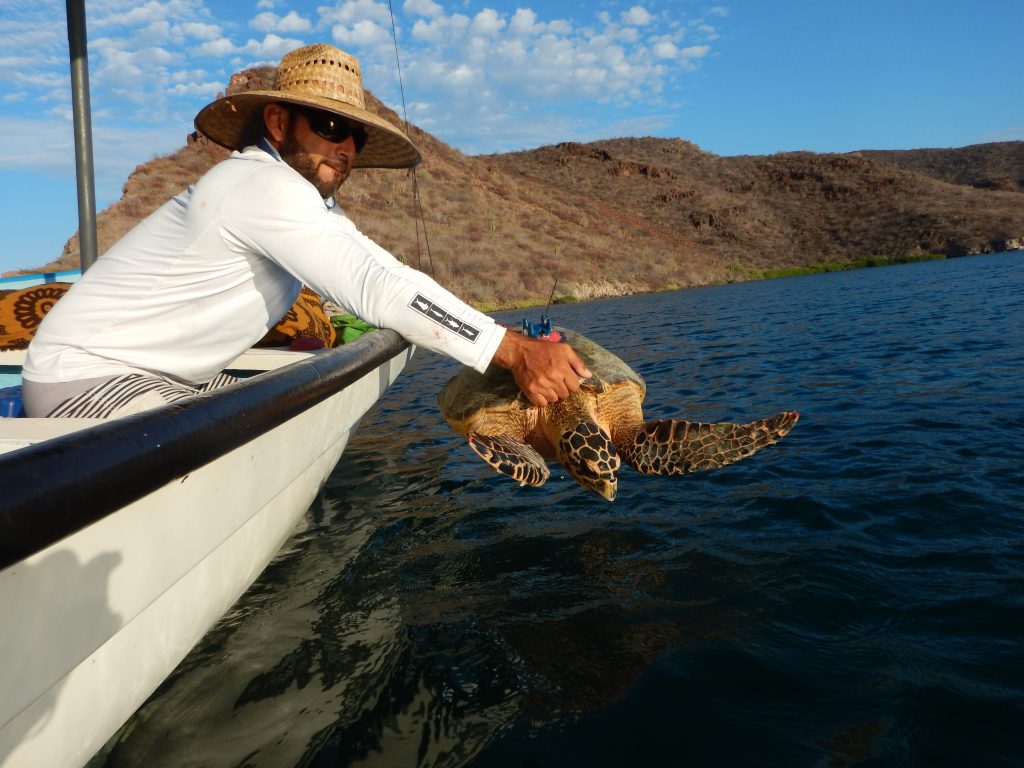
Says Juan, “All of us on El Pardito used to be the enemies of conservation. But now years of working with Don, Amy, and Luli has really changed our perspective. We no longer have the luxury of the previous generations of fishermen to catch everything without a thought. We now need to give back to the ocean. We don’t use nets anymore and we’re trying to spread artisanal, hook and line fishing throughout the community. Change requires a lot of patience, diligence and effort, and we’re committed to that. Now 70% of our income comes from conservation work and only 30% from fishing.” Now, rather than catching and killing sharks for the market as the original Juan did, Juan and Felipe use their deep knowledge of sharks and mad freediving skills to tag sharks for researchers like Dr. James Ketchum of Pelagios Kakunjá who is working to protect and recover shark species in the Sea of Cortez.
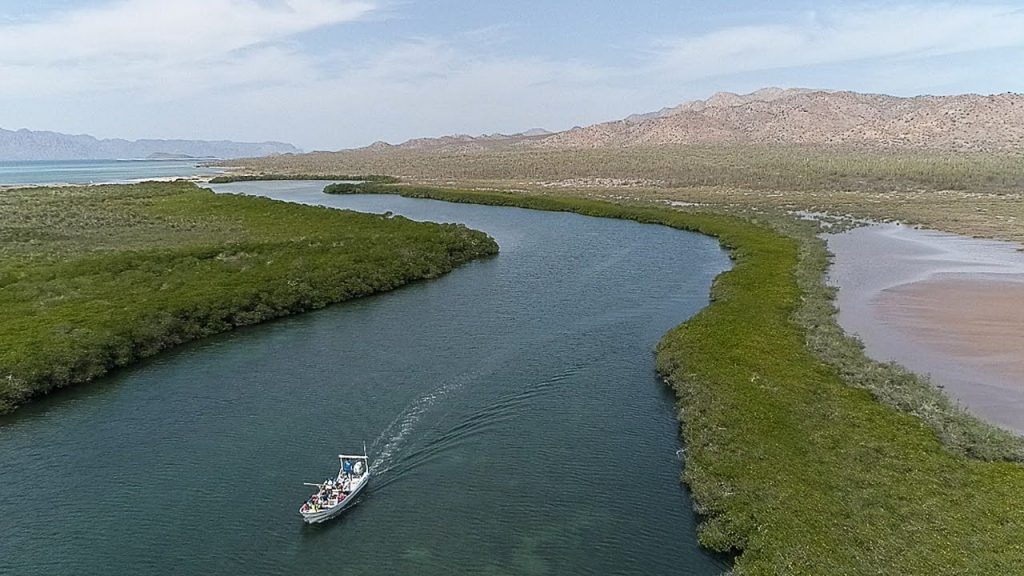
Stephanie Rousso, a marine ecologist who works with Juan and Felipe notes just how far the El Pardito community has come in its relationship to the sea. “El Pardito forms part of the first ever multi-species Fisheries Improvement Project (FIP) initiated by Niparajá and ProNatura to create a system of fish refuge zones for monitoring improvements in fish populations. This FIP was started in 2017 to monitor 33 main species. Participating fishers harvest these species using the more traditional, more sustainable method of hook and line. It is wonderful to see the current generation of fishers in their 30s to 40’s working to replenish the fish stocks and help revive populations overfished by previous generations.”
Says Luli, “The success of my hawksbill project is due to the El Pardito community. When I’m invited to give talks in Mexico City by groups like the WWF I take Juan and Felipe with me, and of course the audience loves them much more than me! They are now so well respected by other conservation researchers and they are increasingly in demand.”
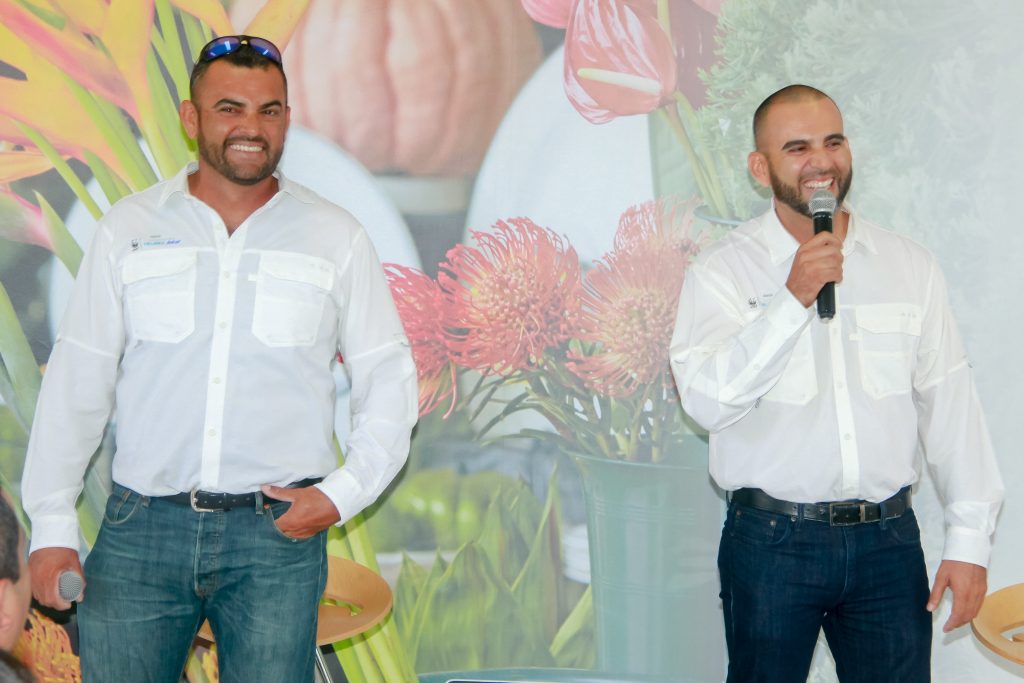
Photo by Alianza WWF Fundación Telmex Telcel
“In demand” seems to be a theme for the Cuevas family. The original Juan might have wanted to get away from crowds, but it seems he was still a social guy. Family lore posits that he had several “wives” in different ports, all of whom produced a good number of offspring. He also developed a strong connection with the community of Las Animas in the mountains of Baja Sur. Amy shares some of the family history she picked up during her 8 months of living on El Pardito. “The Cuevas family needed these large steel hooks for hunting sharks, so they would trade shark, fish and turtle meat with the blacksmith artisans of Las Animas who produced them. When the Las Animas guys were ready to trade, they’d go to the beach closest to El Pardito, light a bonfire to signal the family, then the whole community would sail over. Great parties would ensue on the beach, and this is how El Partido got not only steel hooks, but fresh fruit, vegetables and meats. The ranches in the Sierras were also where the younger generations of Cuevas men would go to find wives. They would sail across to the mainland from El Pardito, hike into the Sierras, then stay for a couple of weeks on the ranches while they courted their sweethearts. This was a very successful strategy.”
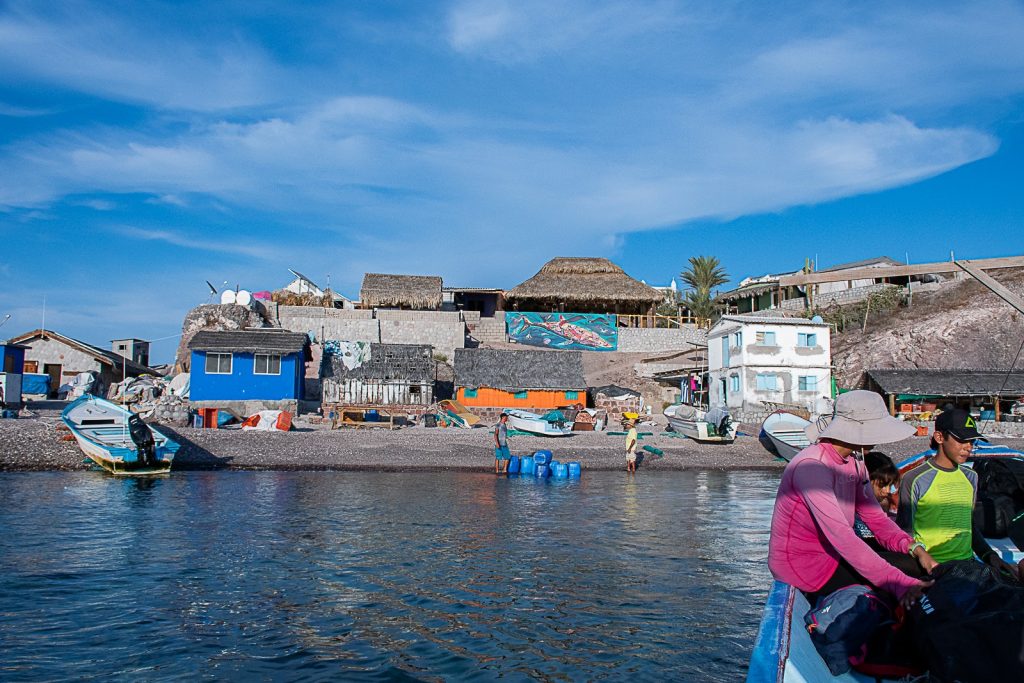
Living on a small rock with the Cuevas family might not seem compelling to all but it appears to be irresistable to most who get the opportunity. Recalls Don, “An American couple, Jaime and Heidi Schultz, were boating near El Pardito in 1976 when they got into trouble. The Cuevas family rescued them and sheltered them on the island. The Schultz’s loved the family and El Pardito so much that they built their own house on the island, and would come down for extended periods every year.” Don, Amy and Luli all understand the pull. “The Cuevas family is my family. My kids have grown up with their kids,” says Don who still brings groups of students to the island every year. “Juan and Felipe are like my brothers” says Luli. “They are my family.” Amy is all in too. “El Pardito is one of my favorite places in the world. I love this family.”
Juan is open to seeing you too. “We are available to anyone who wants to know how to survive in the world. Today so many people live in their phones, not in the world. We have a lot of things to teach people about how to survive outside a city, so please leave your phone at home and come visit us.” The original crowd-shunning, people-embracing Juan couldn’t have issued a better invitation himself.
